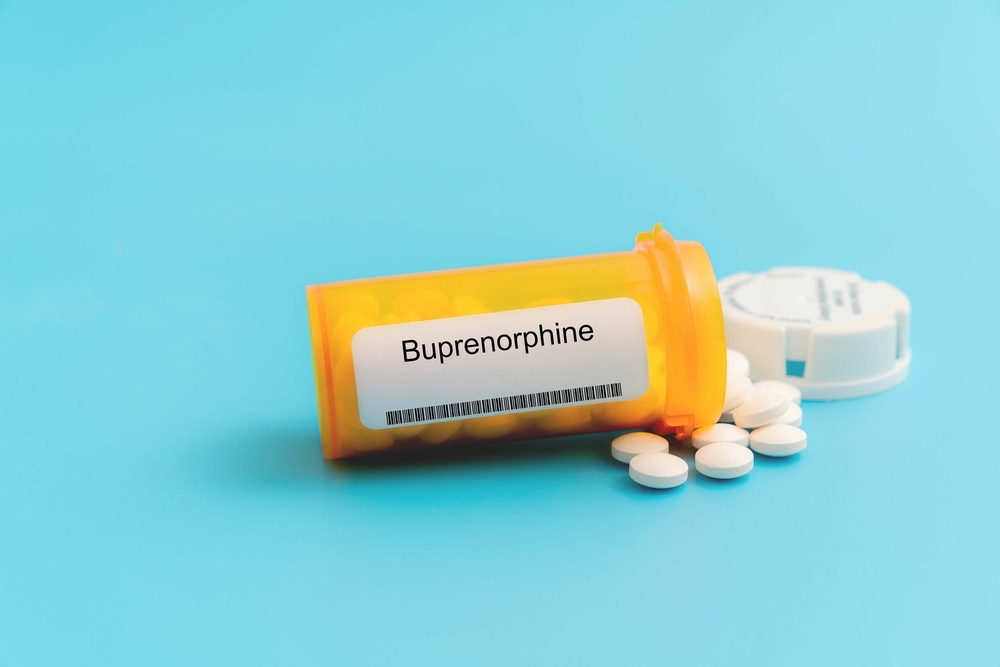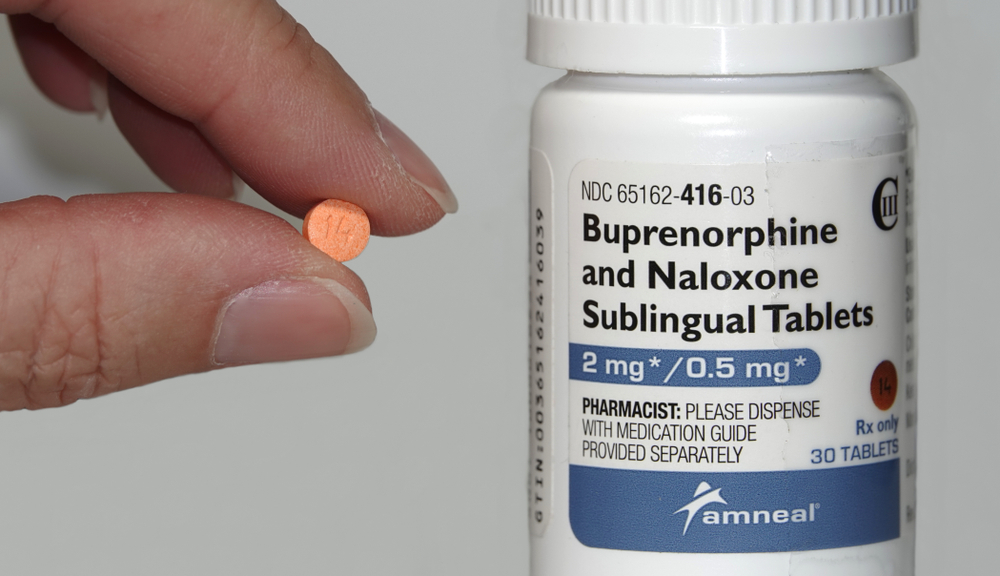Last Updated:
May 16th, 2025
Taking Buprenorphine as Part of the Detox Process
What is Buprenorphine?
Buprenorphine, also known as Subutex, is a prescription medication used to help people struggling with opioid addiction. It is often part of a medication-assisted treatment (MAT) programme designed to reduce cravings and withdrawal symptoms, making recovery more manageable.
Unlike full opioids, such as heroin or morphine, Subutex is a partial opioid agonist, meaning it provides some opioid-like effects but at a much lower intensity. This helps individuals transition off stronger opioids without experiencing extreme withdrawal symptoms or highs.
Buprenorphine is commonly prescribed to those trying to break free from opioid addiction while avoiding the severe withdrawal that often comes with stopping opioids suddenly. It is not a cure for addiction, but it plays a vital role in helping people regain control over their lives.

How is Buprenorphine taken and prescribed?
Buprenorphine is available in different forms but the most common way it is taken for opioid addiction treatment is as a sublingual tablet or film, which dissolves under the tongue. This method allows the medication to be absorbed directly into the bloodstream, ensuring it works efficiently without needing to pass through the digestive system.
It can also be administered as a long-acting injection or an implant placed under the skin, which releases a steady dose over time. These options are often used for individuals who may struggle with taking daily medication or who need additional support in maintaining their treatment plan.
Doctors usually start patients on a lower dose and adjust it based on how they respond. Because Subutex is a controlled substance, it must be prescribed carefully and in many cases, patients need to follow strict guidelines to continue treatment. This is to ensure that the medication is used safely and effectively as part of a recovery programme.
Are there any side effects to Buprenorphine?
Like all medications, Buprenorphine can cause side effects, though they are generally mild compared to stronger opioids. Some of the most common side effects include:
- Nausea and vomiting
- Headaches
- Dizziness
- Constipation
- Sweating
- Drowsiness
- Dry mouth
These side effects are usually temporary and tend to improve as the body adjusts to the medication. However, in some cases, people may experience more persistent side effects. If this happens, doctors may adjust the dosage or explore alternative treatments.
One thing to be aware of is that Buprenorphine can cause mild euphoria, though it is much weaker than that of full opioids. For this reason, it is carefully prescribed and monitored to reduce the risk of misuse.
Is Buprenorphine addictive?
Although Buprenorphine is used to help people overcome opioid addiction, it does have the potential for dependency. Since it is still an opioid, long-term use can lead to physical dependence, meaning the body adjusts to having it in the system. However, the risk of addiction is much lower compared to drugs like heroin or oxycodone.
To reduce the risk of addiction, doctors follow strict prescribing guidelines. Patients typically start on a controlled dose that is carefully monitored. Some people use Subutex as a long-term maintenance treatment, while others gradually taper off under medical supervision.
There is also the risk of psychological dependence, where someone may feel that they cannot function without the medication. This is why it’s important that Buprenorphine is combined with therapy and other recovery strategies, helping individuals build the tools they need to stay sober without relying on medication indefinitely.
Can you overdose on Buprenorphine?
While Buprenorphine is much safer than full opioids, overdose is still possible, especially when combined with other substances like benzodiazepines, alcohol or sedatives.
Symptoms of a Buprenorphine overdose include:
- Confusion and dizziness
- Pinpoint pupils
- Hallucinations
- Low blood pressure (hypotension)
- Respiratory depression (slow or difficult breathing)
- Seizures
- Coma
The most serious risk is respiratory depression, where breathing slows down to dangerous levels. This risk increases when Buprenorphine is mixed with other central nervous system depressants, such as benzodiazepines or alcohol. Studies have shown that many opioid-related deaths involving Subutex occur in individuals with a history of polysubstance use.
To minimise this risk, doctors educate patients on safe use and discourage combining Buprenorphine with other sedatives. If an overdose occurs, emergency medical attention is needed immediately. In many cases, naloxone (an opioid overdose reversal drug) can be used to counteract the effects.
Can anyone with opioid addiction take Buprenorphine?
Buprenorphine is a valuable tool in opioid addiction treatment but it is not suitable for everyone. Certain medical conditions and risk factors may make it unsafe or less effective.
Subutex may not be recommended for individuals with:
- Severe liver disease, as the medication is processed by the liver and could cause complications.
- Respiratory conditions, such as sleep apnoea or chronic obstructive pulmonary disease (COPD), due to the risk of breathing difficulties.
- A history of benzodiazepine or alcohol misuse, as combining these substances with Buprenorphine can be dangerous.
- Severe mental health conditions, such as untreated psychosis or suicidal tendencies, as Buprenorphine can affect mood and cognition.

Pregnant women can take Buprenorphine but it must be done under careful medical supervision. While it is considered safer than other opioids during pregnancy, there is still a risk of neonatal withdrawal symptoms in newborns.
Take the first step with Addiction Helper
If you or someone you love is struggling with opioid addiction, Subutex may be a helpful tool but lasting recovery requires the right support. At Addiction Helper, we connect you with expert advice and tailored treatment options, including detox, rehab and ongoing support.
Call our confidential helpline today or chat with us online for free, professional guidance. Your journey to recovery starts here.
Our compassionate team are ready and available to take your call, and guide you towards lasting the lasting addiction recovery you deserve.
Frequently Asked Questions
(Click here to see works cited)
- Kumar R, Viswanath O, Saadabadi A. Buprenorphine. [Updated 2024 Jun 8]. In: StatPearls [Internet]. Treasure Island (FL): StatPearls Publishing; 2025 Jan-. Available from: https://www.ncbi.nlm.nih.gov/books/NBK459126/
- Pattemore, Chantelle. “Addicted to Suboxone: Is It Actually Possible?” Healthline, Healthline Media, 19 Dec. 2022, www.healthline.com/health/addicted-to-suboxone.
- “Buprenorphine.” NHS Choices, NHS, www.nhs.uk/medicines/buprenorphine-for-pain/side-effects-of-buprenorphine. Accessed 19 Feb. 2025.
- News Center. “Use of Buprenorphine during Pregnancy Better for Infants than Methadone, Study Finds.” News Center, med.stanford.edu/news/all-news/2022/11/buprenorphine-pregnancy-opioid.html. Accessed 19 Feb. 2025.

